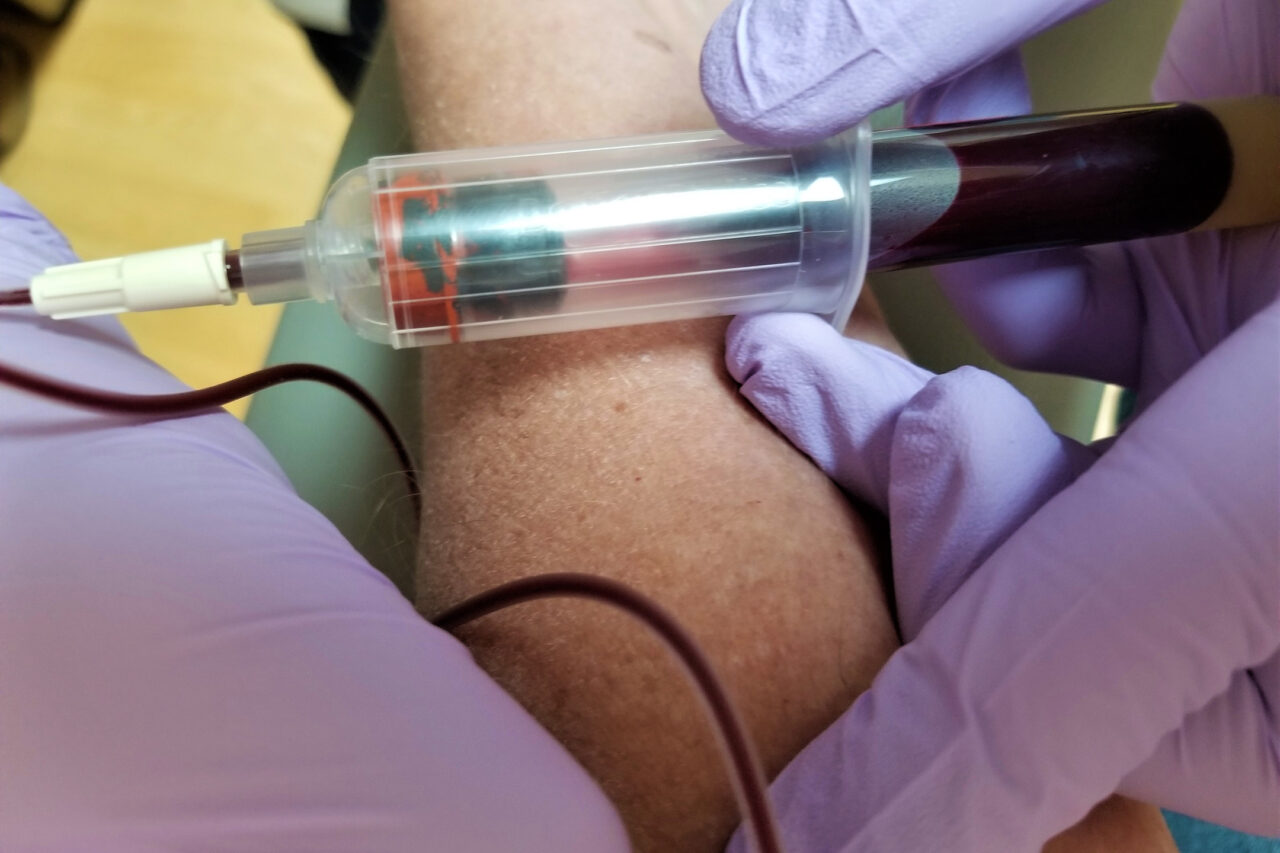Combination therapies including venetoclax and another therapy have displayed promising results against subtypes of acute myeloid leukemia (AML) that are particularly difficult to treat, including relapsed or refractory AML with a specific mutation, high-risk AML, and treated secondary AML.
AML is a type of leukemia in which the myeloid stem cells produce immature blood cells, rather than mature, healthy cells, causing anemia and risk of bleeding and infection. Most patients with AML are not cured by standard-of-care treatments, and researchers are working to fill the unmet need for new, more effective therapies.
Venetoclax in combination with gilteritinib demonstrates molecular clearance of FLT3 mutation in relapsed/refractory FLT3-mutated AML
Relapsed/refractory (R/R) FLT3-mutated (FLT3+) AML is typically resistant to venetoclax, and response durations are short when treated with single-agent FLT3 inhibitors. A multicenter study presented by Naval Daver, M.D., associate professor of Leukemia, included 54 patients with R/R FLT3+ AML who were treated with a combination of venetoclax and the FLT3 tyrosine kinase inhibitor, gilteritinib. The combination therapy was safe and well-tolerated, other than frequent but manageable cytopenia that occurred in 80% of the trial participants, and it produced an encouraging composite complete response rate in 74.5% of the FLT3+ patients. Additionally, the therapy cleared the FLT mutation in more than half (56.7%) of patients who responded to treatment, which may contribute to longer survival.
This trial provides promising evidence that venetoclax and gilteritinib could be an effective and safe treatment option for patients with relapsed or refractory FLT3+ AML,” Daver said. “In the future, we plan to expand the trial to reach more patients, including developing frontline combinations of azacitidine with venetoclax and gilteritinib in older/unfit AML patients.”
Azacitidine with venetoclax and magrolimab shows high response rates in patients with newly diagnosed older/unfit or high-risk AML
Patients with AML who are treated with combination therapy of venetoclax and azacitidine tend to experience high frontline response rates but ultimately relapse and survival rates for R/R AML are very low. Another study presented by Daver explored adding magrolimab, an anti-CD47 antibody that blocks macrophages’ “don’t eat me” signal, to the combination. The ongoing Phase II study enrolled 48 patients from a variety of AML types: newly diagnosed, R/R without previous venetoclax treatment, and R/R following venetoclax treatment.
The complete response rates and CR/CRi were 64% and 76% for newly diagnosed patients including a CR rate of 64% in TP53 mutated frontline patients. CR/CRi rates were 63% in those who were R/R but had not been treated with venetoclax and 27% in those who were R/R following venetoclax treatment. While anemia after dose 1 and 2 was a common side effect in the study participants, it was manageable, and the combination of venetoclax, azacitidine, and magrolimab was found to be especially effective in newly diagnosed older/unfit patients with AML.
“The high complete response rate for newly diagnosed patients, especially high-risk patients such as those with TP53 mutations, is especially encouraging,” Daver said. “Adding magrolimab to the existing venetoclax and azacitidine combination will be evaluated in a randomized multinational Phase III study in older/unfit patients with newly diagnosed AML.”
Retrospective analysis of frontline treatment approach with treated secondary AML
Another challenging subtype of AML is treated secondary AML (ts-AML), which is AML that develops after a patient is treated for a precursor hematological disorder, such as myelodysplastic syndrome (MDS). Ts-AML has a poor prognosis, as it does not tend to respond to treatment and has a high risk of early disease relapse. While there is an approved treatment, it does not improve outcomes for patients who were previously treated with hypomethylating agents (HMAs). The retrospective analysis of 562 patients with ts-AML and prior HMA exposure explored response rates by treatment type (intensive chemotherapy [IC], low-intensity chemotherapy [LIC], or HMA+ venetoclax).
The analysis, presented by Sangeetha Venugopal, M.D., a fellow in Leukemia, determined that the combination therapy of HMA and venetoclax produced higher response rates and longer survival than intensive or low-intensity chemotherapy. While intensive and low-intensity chemotherapy produced similar complete response rates (24% and 26% for IC and LIC, respectively) and overall survival (1-year OS: 14% and 22% for IC and LIC, respectively), just the addition of venetoclax produced a higher complete response rate (39%) and overall survival (1-year OS: 35%). These results suggest that combination therapy with HMA and venetoclax may be the best option for treating ts-AML patients who had previous HMA exposure.
“The response rates associated with HMA and venetoclax therapy imply that this combination therapy may be preferable to the typical chemotherapy-based approaches in treated secondary AML,” Venugopal said. “However, the prognosis for treated secondary AML is poor, and effective treatment options for this high-risk patient subset is an urgent unmet need.”


